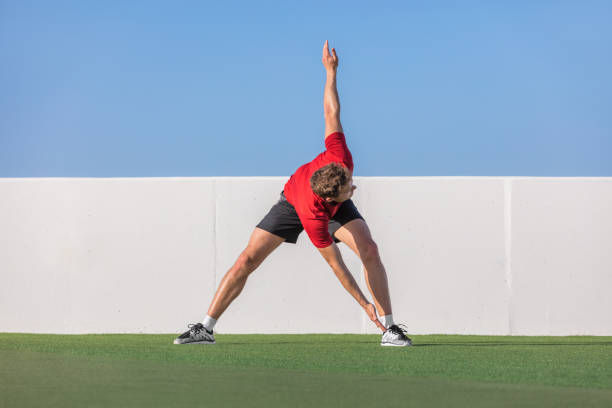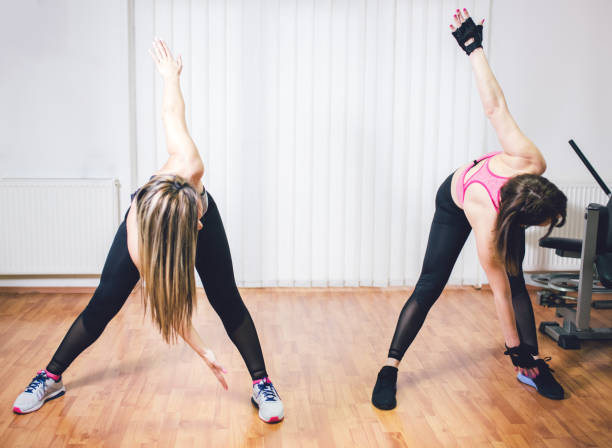A full-body exercise known as the windmill can be performed using a dumbbell, kettlebell, or even no weight at all. And when done properly, it can aid in strengthening your shoulders, hips, and core.
What is a Windmill Exercise?
The Windmill Exercise is a challenging workout that targets the entire body. Strengthening and stabilizing are the main advantages. Your shoulders, obliques, and glutes are the main areas worked by the Windmill. With a kettlebell in one hand, windmills are frequently executed.
Let’s review the Windmill Exercise instructions before grabbing the weights. You can maximize your exercise results by using the proper form.
Windmill Exercise Benefits
Easy Set-Up
A home gym should use the Windmill Exercise. You only need a small area to set your mat down before you’re ready. Little to no equipment is needed to operate a windmill. To perform the exercise, obtain a kettlebell that is the proper weight. The Windmill Exercise can therefore be done both inside and outside with ease.
Get Your Body Toned
Similar to the Windmill, kettlebell exercises engage a variety of body parts’ muscles. Our daily activities are mirrored in the movement. like leaning forward to lift the objects off the ground. Your body will tone up from such useful movements. This greatly simplifies the actions we perform on a daily basis.
We can complete more difficult tasks with loaded workouts. You can perform routine moves with ease as long as you add weights. similar to how you bend forward to reach objects. It is no longer difficult to lift heavy bags.
Improve Aerobic Conditioning
Contrary to rowing and the elliptical, the windmill does not involve cardio exercise. However, it can still aid in enhancing aerobic capacity. Training with kettlebells improves muscular strength. additionally, resistance training is advantageous for your stamina, strength, and aerobic fitness.
Glucose Control
A similarity between high-intensity training and the Windmill kettlebell exercise can be seen. They aid in reducing blood glucose levels. If you need to monitor your insulin level, that is a great benefit. Exercise should be done regularly by those who work seated jobs. Additionally, using windmills to warm up your muscles is a great choice.

How to Do the Windmill Exercise
• Standing with your feet slightly wider than shoulder-width apart. Your left foot should be 90 degrees straight to the side. Letting your left hand hang down at your side, raise your right arm to the ceiling. Look up at your right hand.
• Pushing your hips to the right side while engaging your core. Use your core to maintain balance as you slide your left hand as far as you can down your left leg toward your ankle without touching your leg. The entire time, your left arm should remain parallel to the floor. Straightness is preferred for the right leg. To prevent locking your knee, you can allow a slight bend in your left leg.
• Keep your core engaged and your spine long the entire time by pausing before pushing down through your feet to stand back up to the starting position.
• Follow each rep with a side switch.
Common Windmill Exercise Mistakes
Loading Up the Weight
If you choose to use a weight for this exercise, you are not required to begin with a heavy dumbbell or kettlebell. Starting out slowly, work your way up. “Five to fifteen pounds is a good starting point for the majority of people. As you master the movement, concentrate on using less weight. You want to feel comfortable going in both directions and then you can start to progress from there,” says Dr. Miller, if you carry too much weight, your upper arm may tend to extend back behind your shoulder, which is not ideal. You should be in a straight line from your shoulders to your raised arm.
Trying to Push through Discomfort
You ought to feel a little challenged when performing a windmill. There is no doubt that this maneuver is difficult. However, there shouldn’t be any popping or discomfort. “You want to feel at most a mild stretch or strain. If you try to force a range of motion that isn’t there, you shouldn’t experience any sharp pains. The movement should be tolerable and you shouldn’t feel like you’re straining to put yourself in a position where your body just doesn’t want to go,” Dr. Miller notes.
Windmill Variations
Low Kettlebell Windmill
With your right hand extended straight up toward the ceiling, hold a kettlebell. Maintain a neutral wrist while letting the bell hang from the back of your arm. Your left foot should be 90 degrees straight to the side. Brace your core.
Dumbbell Windmill
Dumbbells can be held in your raised arm in place of a kettlebell. If you don’t have a kettlebell, this will come in handy but is a little more difficult on the shoulder stabilizers.
Bottom-up
The bottom of the kettlebell should be facing the ceiling as you hold it upside down with your hand firmly encircling the handle. For the grip and shoulders alike, this is incredibly difficult.
Double-kettlebell
Holding a kettlebell in your lowered arm will provide additional resistance as you return to the starting position in addition to holding one overhead.
Double-kettlebell With Single Rack
Carry out the double-kettlebell variation while keeping the bottom kettlebell in a rack position (right in front of your shoulder).

What Muscles Does the Windmill Exercise Work?
Hip Extensors
The hips, which are made up of the glutes and hamstrings, are what give the windmill exercise its power.
You should feel a stretch in your hamstrings (not your waist) as you lower down in the exercise with good form.
Then, to stand up, concentrate on contracting your glutes to bring your hips back to the middle. Consider it a variation on the sideways deadlift.
Core
Your core prevents you from bending or collapsing mid-rep while the windmill exercise is powered by your hips.
Maintaining an engaged core will keep your torso strong and stable, allowing you to move more weight with a better, safer form.
Shoulder
The shoulder muscles, which include both the deltoids and the rotator cuff muscles, work arduously to keep the weight in place and from tottering around after initially assisting you in getting it placed overhead.
You might notice that one of your shoulders is a little stronger or more stable than the other when performing this exercise.
Conclusion: A Full-body Exercise
The Windmill is an excellent all-body exercise. Engaging your glutes, core, and shoulders is excellent. To make the Windmill more difficult, get a kettlebell. Some athletes substitute a barbell. You can improve your strength and endurance by visiting windmills. That is the ideal home workout. Since it only requires a small amount of space and tools.
